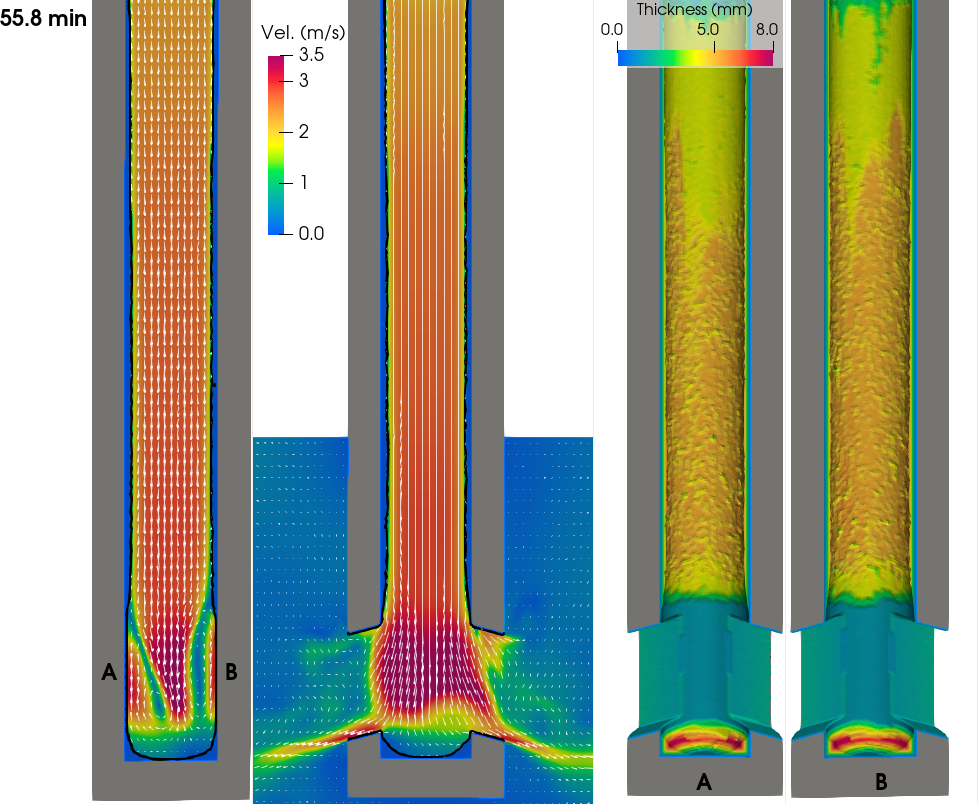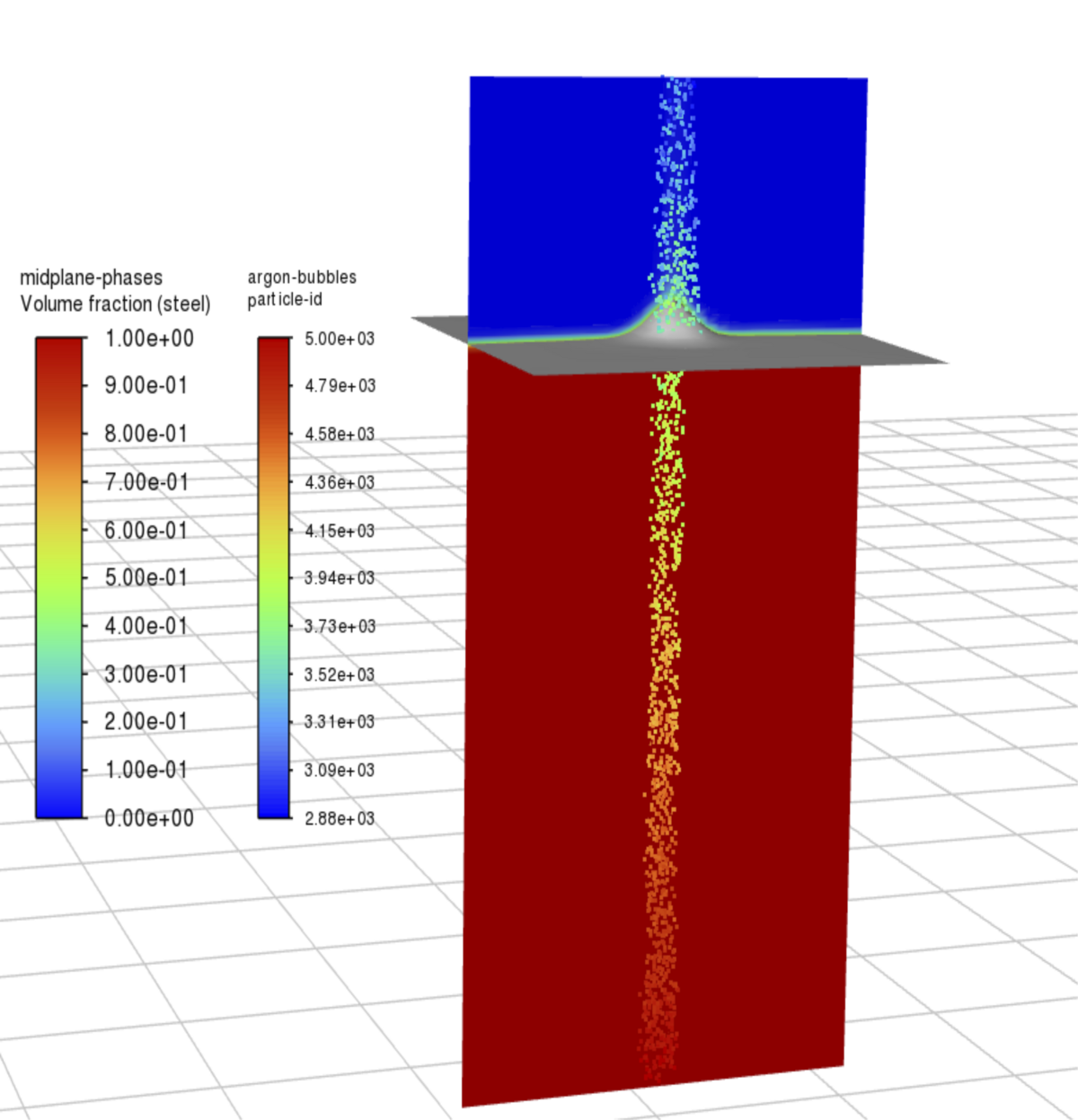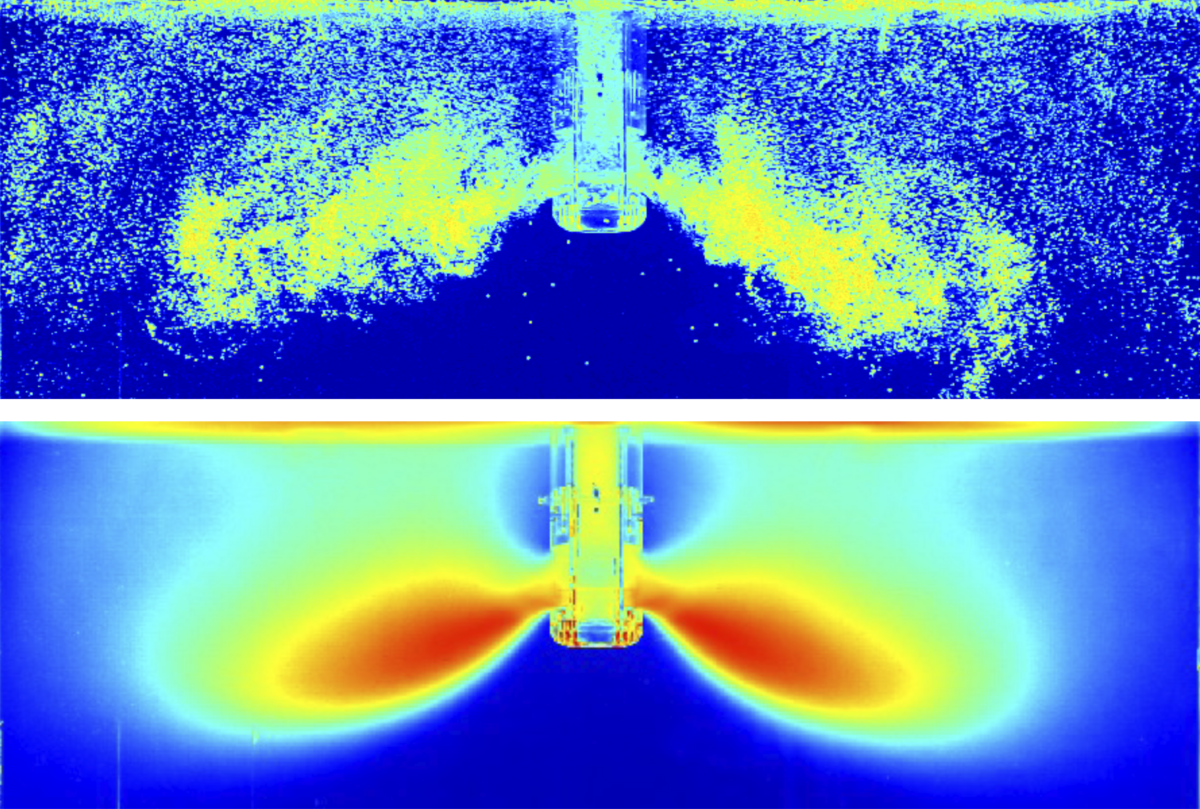Introduction
This project aims to gain a thorough understanding of the physical mechanisms governing the interactions of metallurgical multiphase flows, considering liquid metal, slag, gas injection, nonmetallic particles and solid refractory walls. Numerical studies will help to understand metallurgical processes in steelmaking, like AOD converter, RH degassing and continuous casting, and a range of experimental investigations will provide a validation for the numerical modelling.
Bubbly flows are an important technique in steel production for improving homogenization, preventing clogging, and removing unwanted elements in liquid steel. To investigate the physics of interaction between metal fluids, non-metallic inclusions (NMIs) and gas bubbles, phenomena like bubble and bubble plume formation, as well as particle behavior in bubbly flows with light and massive gas injection will be considered. Furthermore, particle deposition and clogging mechanisms, as well as the wear behaviour of the refractory material in metallurgical vessels will be investigated. These are important phenomena determining the steel quality in secondary metallurgical treatments and continuous casting.
The project will utilize novel modelling approaches, enhancing the accuracy of process representation. Accompanying the numerical modelling, the analysis of material samples will provide validation for these computational models and determine key parameters for the simulations. The behavior of inclusions in the interface of steel and slag and their wetting characteristics will be explored experimentally, providing support for simulation activities. Experimental data from plant operation and smaller-scale laboratory setups of these processes will further contribute to a validation of the numerical investigations.
Objectives and Motivation
- Creation of comprehensive models of steelmaking processes with numerical simulations
- Validation of numerical results by employing physical models and experimental setups
- Consideration of bubble formation and particle flotation, fluid-fluid interactions, gas-fluid interactions at the bubble interface as well as fluid-refractory modelling
- Investigation of the behavior of non-metallic inclusions and clogging mechanisms
- Modelling erosion and wear processes of the refractory material
- Application of modelling and model development to argon-oxygen-decarburization (AOD) converter, Ruhrstahl-Heraeus (RH) process, and fluid flows in tundish, submerged entry nozzle (SEN) and mold
Methodology
- Investigation of bubble and bubble plume formation as well as particle-bubble interaction by analytical considerations, resolved numerical simulation and experiments, e.g. high-speed imaging or time resolved particle image velocimetry (TR-PIV)
- Extension of simulation models towards including SEN temperature distribution and its impact on clogging by considering multiphase flow
- Investigating the combination of physics-based numerical models with data-driven machine learning techniques
- Modeling of a refractory erosion law with inversely determined parameters and implementing an immersed boundary approach, verified by experiments with the Continuous Wear Testing Device (CWTD)
- Study of the behavior of specific NMIs in the system steel-slag-refractory by different methods such as scanning electron microscopes (SEM), energy dispersive X-ray spectroscopy (EDS), in-situ experiments with high temperature laser scanning confocal microscopy (HT-LSCM) as well as contact angle measurements
- Physical and experimental simulations by employing different casting models (water and liquid metal in varying scale) as well as an RH plant model to validate simulations for different process conditions
- Performing plant experiments (e.g., temperature measurement in SEN) and clogging-relevant data mining (e.g., clogging samples and metallographic analyses of industrial plant parts)
Results and Application
Insights will be obtained into the behavior of bubbles and bubble plumes in metal fluids, as well as into the flotation of particles and its subsequent separation towards the slag phase or impact on clogging. Temperature effects in clogging will be taken into account. SEN clogging, and the resulting thermal response of the SEN will be studied for different steel grades, under consideration of physical and chemical phenomena occurring between liquid steel and refractory. These outcomes will be integrated into existing clogging models for metallurgical processes.
Additionally, massive gas injection will be studied, considering compressibility and gas bubble behavior under normal and reduced ambient pressure. Based on these insights, solutions for stable AOD operation and efficient RH recirculation flow are anticipated.
The phenomena governing continuous refractory wear will be studied and quantified, in order to obtain material-related wear parameters. Knowledge of refractory wear will contribute to developing new refractory materials that can be used in various industrial processes, reducing costs, raw materials, energy consumption, and waste materials.
By studying the flow behavior of the liquid metals, numerical simulations of mold flow in continuous casters are created, aiming to optimize process parameters. These simulation results will be validated and refined by measurements on physical models with water or liquid metal, with the goal of transferring experimental results into CFD models. Finally, simulation results of real industrial processes are analyzed and evaluated to assess the feasibility of online simulation and process control.

 DE
DE EN
EN![[Translate to English:]](/fileadmin/_processed_/b/5/csm_area3_weiss_f1f233eda7.png)


